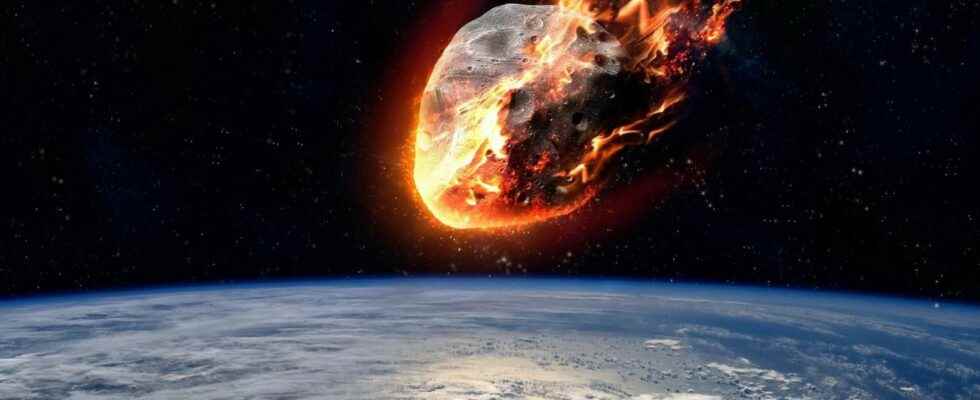The most dangerous events are not necessarily the riskiest. The probability of an asteroid falling large enough to cause planetary-scale consequences is very low, but not zero. This is why it is advisable to prepare now for the day when the measurements of the trajectory of a small celestial body will accumulate without the Earth leaving the “window of uncertainty”. Futura is organizing a live on May 5, in the company of two scientists, to discuss the “Planetary Defense” program. We invite you to participate.
The impact, or risk of impact, of a catastrophic celestial body (asteroid or comet) with the Earth has graced film productions for decades. And if these stories make it possible to create perfect blockbusters, the fact remains that the possibility of such an event is anything but imaginary.
Every day, a dozen tons of space dust fall on Earth. Some of this dust orbit in the solar system since time immemorial and another was released into space by comets when they sublimate their volatile elements. To this ten tons, we can add about four times more material falling on Earth daily which comes from larger blocks, the meteoroidswhich, when crossing theatmosphereusually vaporize in one flash of light that we call ” shooting star ” Where racing car.
The live Futura – Planetary Defense: join us and ask your questions!
The most disturbing thing is not this permanent rain of extraterrestrial pebbles, but these infinitely larger blocks, asteroidswhose size varies between that of a car and that of a French department. Everyone has in mind the devastating event that life on Earth experienced 66 million years ago and which radically altered all the ecosystems on a planetary scale.
Certainly, the larger the asteroid, the lower the probability of an impact occurring. An impactor the size of the one that forever changed the course of dinosaurs falls to Earth about once every 100 million years. But that doesn’t make the question of what humanity might do if it found out that one of these mountains of rock were to collide with Earth a few decades later.
What recourse do we have? What solutions are there if ever such news is announced? Do space agencies and governments around the world have a Bruce Willis ready to go at all times? Would these organizations even know how to collaborate, like the film don’t look up ?
Planetary defense: a program to prevent the threat of a near-Earth object
Today, the international program for the study, monitoring, measurement and evaluation of the danger of near-earth objects (celestial objects whose trajectory crosses that of the Earth) is called: “Planetary Defense”. Besides the appearance of the study of asteroids potentially dangerous, two other projects are part of this program:
- The study and experimentation of means physical to divert a possible future impactor.
- An encounter (Planetary Defense Conference), every two years, where representatives of governments, space agencies and experts from all walks of life consider a scenario created from scratch and test, in this giant simulation, the means that international coordination could implement to avoid (or not) disaster.
It is to discuss this planetary defense and the means that humanity puts today to its protection and its backup in the unlikely event of an impact with an asteroid large enough to represent a real danger, that we give you an appointment on Thursday, May 5 at 8 p.m. on the platforms Youtube, Facebook and Twitch from Futura-Sciences to discuss with our two guests: Elisabetta Dotto, scientist at Inaf (Rome Observatory) and Patrick Michel, CNRS research director at the Côte d’Azur Observatory, scientific manager of the mission Hera of the ESA.
Interested in what you just read?
